In the modern day, the Mamiya name is pretty much synonymous with medium format cameras. Some film photography enthusiasts might not even know that the company also produced many 35mm cameras back in the day. From what I read the Mamiya 35mm SLRs sold quite well, yet they seem largely forgotten today. Our community likes to focus on certain brands and models and still keeps them in the spotlight many decades after they were made, while other cameras are not so fortunate. Sometimes for a good reason, sometimes not so much.
Admittedly I’m a bit of a hipster, always looking for something outside the trend, and these M42 Mamiyas interested me for a good while. Partially because of the famous brand, but also because some models feature a spot meter – not something you see in just any old SLR. I kept an eye out for them and when I noticed this lovely black Mamiya DSX 1000B – they usually come in silver and I’m of the opinion that every camera looks much better in black, you see – it was finally time to get one. Even a “fires and winds, untested further“ description didn’t scare me off but it seems other bidders weren’t so determined – I ended up paying less than 20 euro for the body with a standard 55/1.8 lens. Even if that was a particularly good deal, in general these cameras seem to be rather undervalued today.
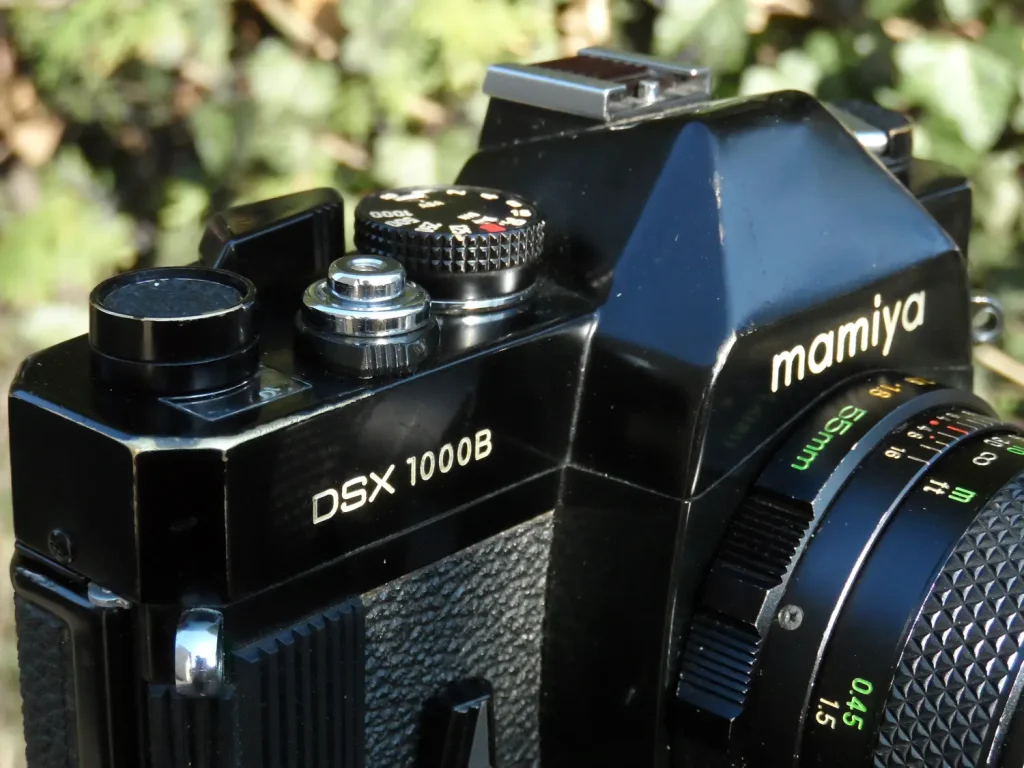
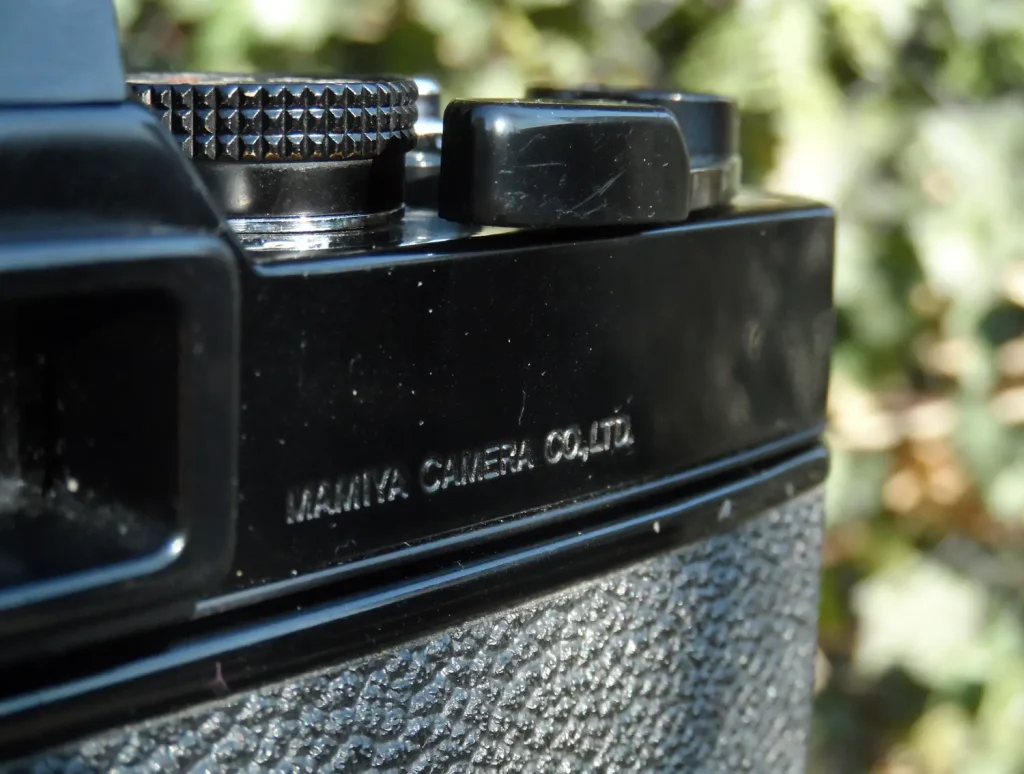
My first impression was dominated by the surprise of just how big and heavy the camera is. It was introduced in 1974, and by that the trend for small SLRs was already underway on the market. But as Mamiya SX cameras were largely based on their previous TL series they still presented a bulky, a bit old-fashioned kind of design. These TL cameras were quite simple SLRs – fully manual and mechanical with a spot meter and M42 lens mount, not many bells and whistles. Later DTL models added a second meter for average reading, which was kind of a big deal – no other company offered two metering patterns in one camera before.
The SX series followed, at first with MSX models featuring only a spot meter and then DSX adding an average meter. The most notable advancement in the SX series was the introduction of open-aperture metering – although only with dedicated Mamiya SX lenses. These still featured a 42mm thread, but like other manufacturers still using the M42 mount at the time Mamiya modified it so that the lenses could transmit a selected aperture value to the camera body. Unfortunately what this means is that these lenses are pretty much impossible to attach to any other M42 cameras or adapters without some permanent modifications. Not only is there a solid pin sticking out on the bottom of the lens, the aperture ring protrudes past it as well. At least there are no such problems the other way around and SX Mamiyas will gladly accept any standard M42 lens. My particular model is called DSX 1000B – we already explained the DSX part, 1000 stands for the fastest available shutter speed, and B for black colour. The only other difference from a standard, silver DSX 1000 is the addition of a shutter release lock. I’m not sure why it called for a separate model designation but nevertheless here we are.
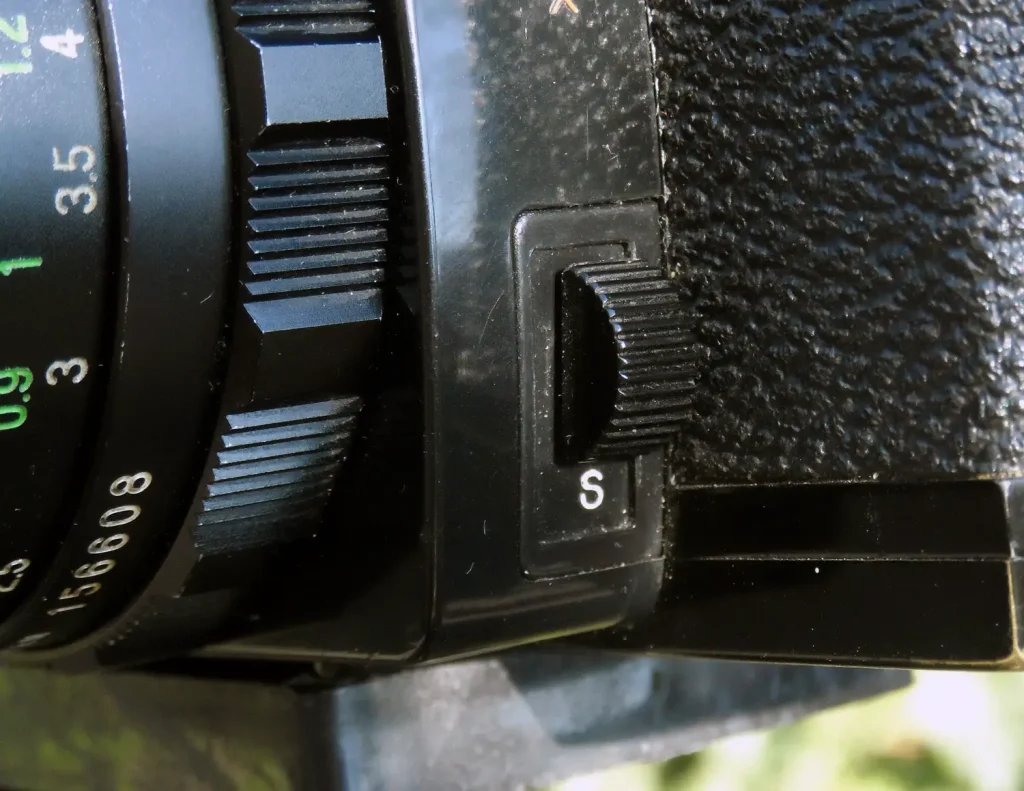
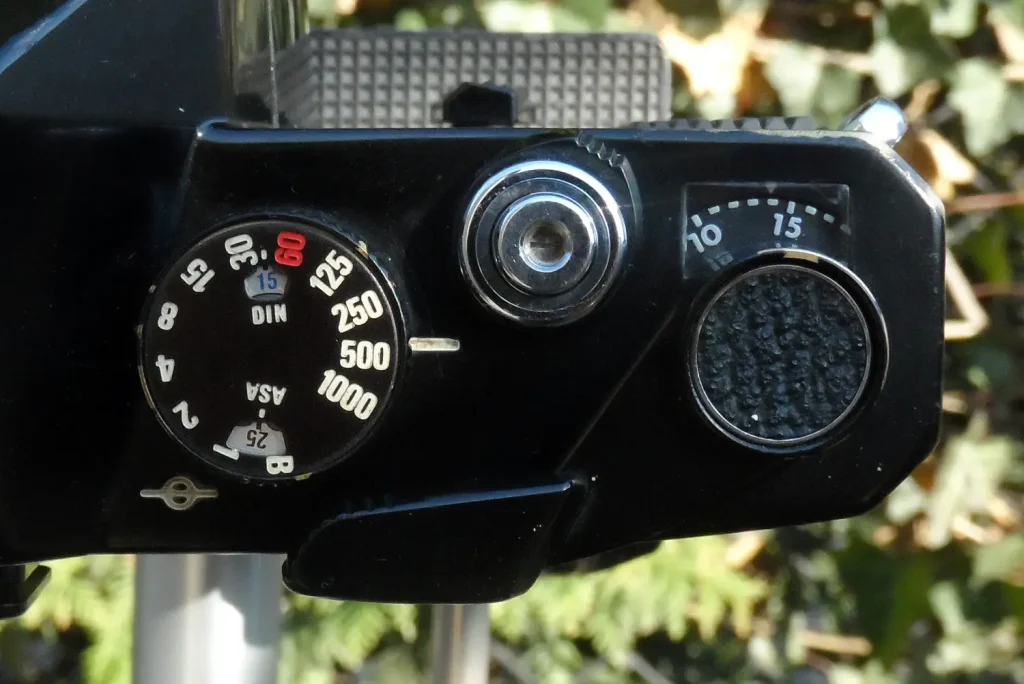
As mentioned before – the Mamiya DSX 1000B is big and heavy. But in my subjective experience the camera more than makes up for it with being very comfortable in use. The back of the body is slightly curved and there’s a small rubber “grip” on the front. It’s not much, but it helps – the camera fits the hand well and I find it noticeably easier to get a solid hold on it than on most similar cameras I’ve had experience with. When it comes to controls it’s a simple, conventional design and it just works – the essentials are right where you expect and nothing gets in the way. It instantly felt “right” to me, like I’ve been using it for years already. While I wouldn’t say it gives the impression of a premium build quality, it comes with a reassuring sturdiness. Even if poking at some of the body panels returns a hollow sound the camera as a whole feels very solid. It evokes the feel of some heavy-duty piece of equipment, not particularly refined but built to last and endure. In a bit of a contrast, the shutter and mirror work is very light. I’m not sure if the mechanism is so well dampened or it’s just down to the thick metal body (or both), but you can barely feel any vibration when taking a photo. Even though my hands are not particularly steady I was able to take a perfectly useable 1/15s hand-held shot with a 55mm lens.
Apart from the spot meter, the most unique feature of the DSX 1000B is hidden in the advance lever. It’s nothing groundbreaking, but it’s a neat and practical piece of design worth a mention. The lever has more function than just advancing the film – for one, pulling it away from the body activates the light meter. Yes, that in itself is not very uncommon, but Mamiya engineers went a step further. Once the lever is in the “out” position, pushing it back towards the body doesn’t turn the meter off like in those other cameras – there’s a button cleverly hidden on top of the lever for that – instead it stops down the lens and adjusts the light meter readout accordingly. And it’s not just a pointless quirk, but is actually pretty comfortable in use. No need to fumble for the stop-down button all over the camera since it’s right under your thumb already. While with SX lenses it only functions as a depth of field preview, it’s necessary for stop-down metering with other M42 glass – but makes it a bit less awkward than it usually is with other cameras.
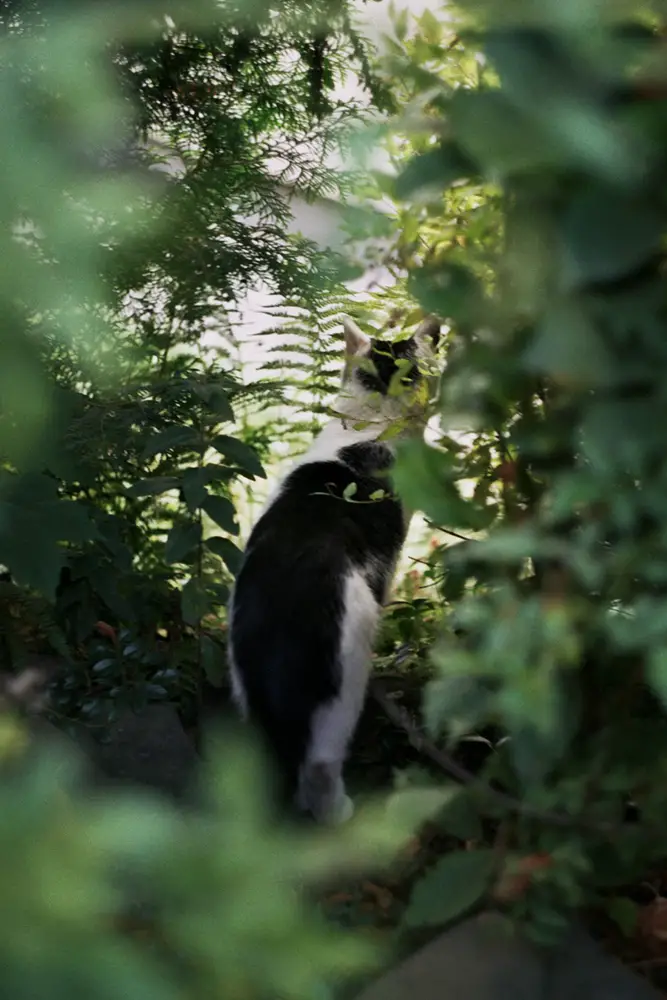
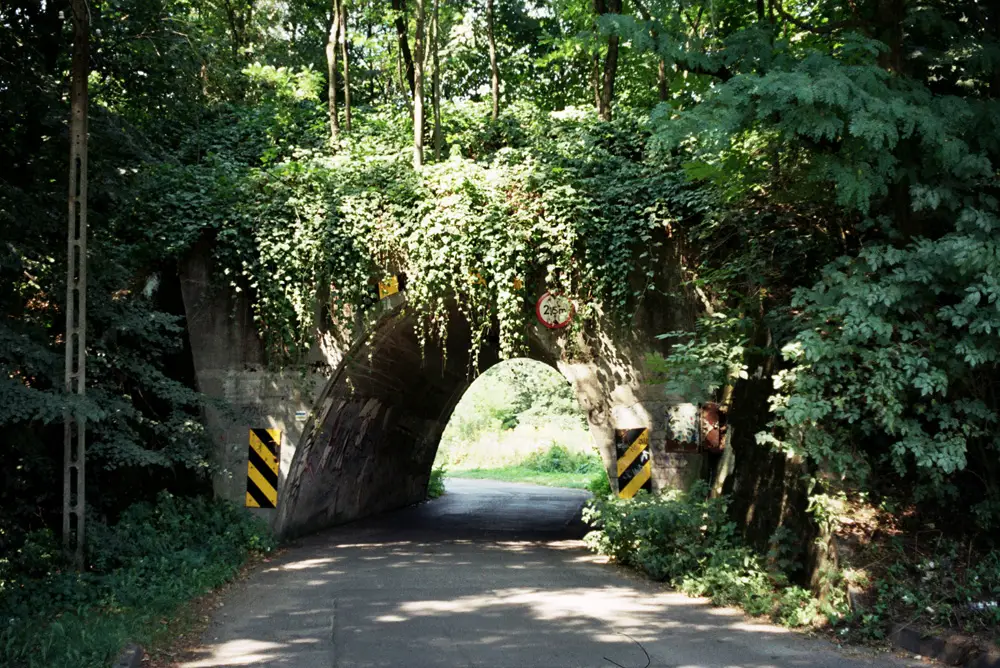
The light meter in my Mamiya DSX 1000B wasn’t tested by the seller and I had no idea what to expect. Since the shutter itself is entirely mechanical I wouldn’t have a problem using the camera if the meter was dead. But after installing a new battery (unlike a lot of other cameras from its era it takes a SR44 1.5v cell, no need for any weird mercury battery replacements here) the meter needle sprung to life and a quick check revealed that it’s matching the readouts of my trusty Minolta X-700 pretty well on both modes. Since then I’ve shot multiple rolls relying solely on this meter and it has never let me down. Granted, this was only with negative film and for the ultimate test I should probably try it with some slides one day – but hey, I’m already very happy with it.
All it takes to go from average to spot metering is a simple switch next to the lens mount. The average mode is obviously very common and self-explanatory, nothing to write about here. And as for the spot meter… Well, it’s not very “spotty” – the area it reads the light from is relatively large and also awkwardly placed at the bottom of the viewfinder. But in the end it works well and is definitely more than just a cool feature that you’ll rarely use in practice. It’s seamlessly integrated into that familiar experience of shooting an old, simple SLR which (at least for me) is a significant part of the appeal in using a camera of this kind. It doesn’t really change that feeling or the way you use it, but simply offers a bit of extra help in a very natural and non-intrusive way.
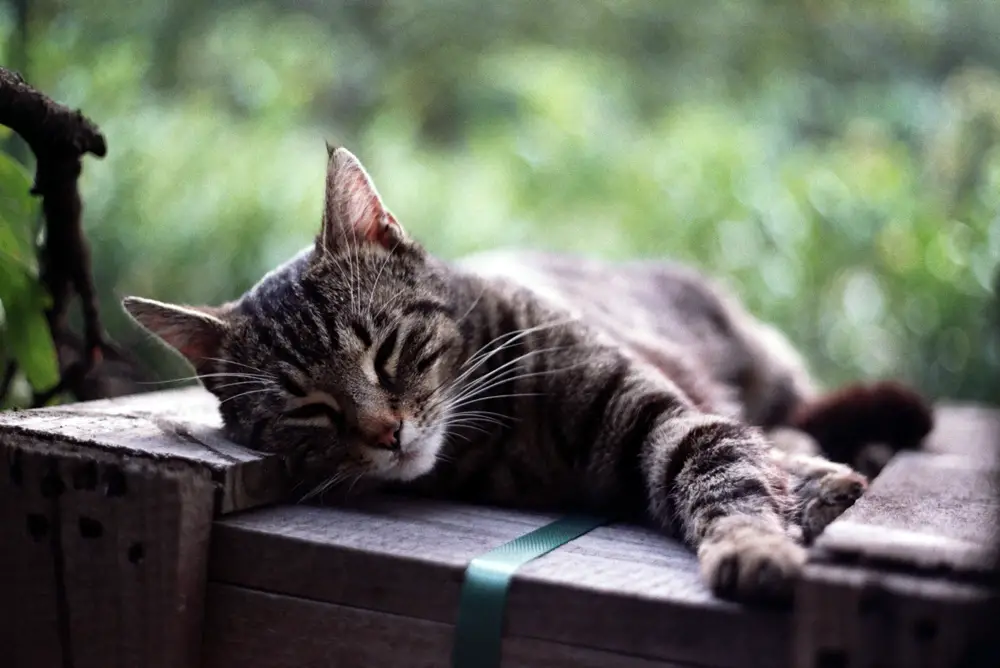

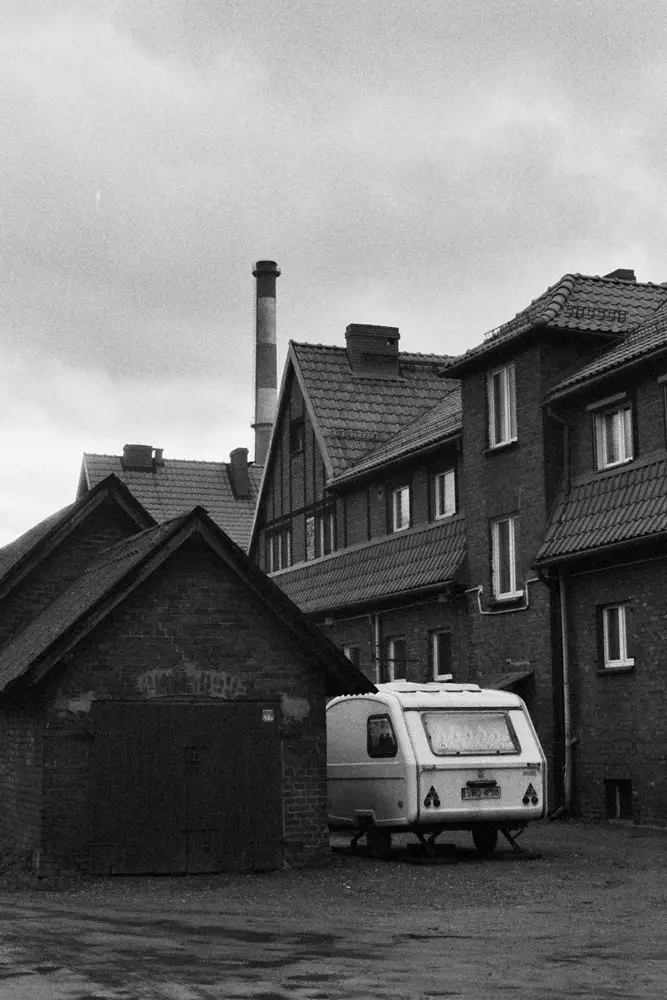
The biggest disappointment with the Mamiya DSX 1000B would probably have to be the viewfinder. It’s not very big or bright and only features a standard microprism patch in its center to help with focusing. Which wouldn’t be a big problem in itself but somehow that microprism doesn’t seem to work as well as in other cameras I’ve used. Overall it’s not the worst but definitely takes some effort to be precise and exact with your focus. And there’s no shutter speed or aperture displayed here, only an indicator of the selected metering mode and the simple light meter needle which you need to place in an indicated zone for correct exposure.
In the end when you look at the rational arguments, there’s nothing particularly special about the Mamiya DSX 1000B. It’s more or less just another SLR of its era with only minor points of interest. The spot meter is nice, but it’s hardly a game-changer. The M42 lens mount means a whole lot of excellent glass is available but you have to stop them down for metering and the dedicated SX lenses are pretty scarce. For the most part it’s comfortable but the weight and size might be a big detriment in some situations. From what I read they’re not the most reliable cameras and I feel lucky that mine works so well. Would I recommend the Mamiya DSX 1000B to everyone? Probably not. I’d say it’s something more for camera geeks rather than your average photographer. Of course you can take great pictures with it, there’s nothing wrong with it, but is there a rational reason to choose it over any of the more popular and established options? I don’t think so.



But… I love it. There’s something about the Mamiya DSX 1000B that makes me want to pick it up again and again. It’s just… so cool. It’s not a camera I’d use every day but whenever I do, it feels great. I can’t explain it with words of reason, it’s just some weird emotional connection I have with it. After all, choosing a camera is more than just looking at specs. Sometimes, things simply click and the good feeling is more important than any number of features and rational arguments.
Thank you for reading! If by any chance you’d like to see more of my pictures, you can find some on my flickr or twitter.
My other posts on 35mmc can be found here
Share this post:
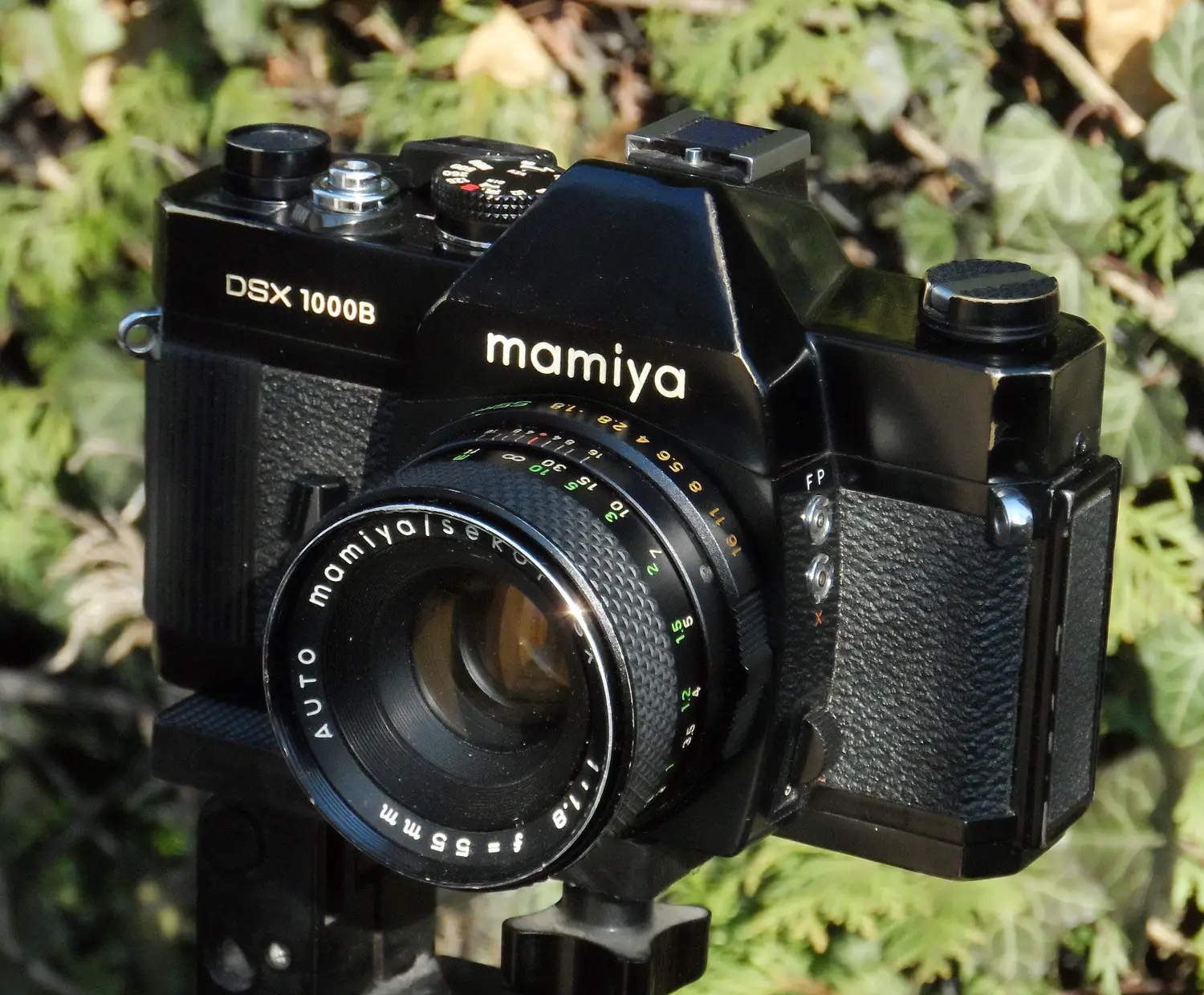








Comments
Ed on Mamiya DSX 1000B Review
Comment posted: 11/05/2020
Kodachromeguy on Mamiya DSX 1000B Review
Comment posted: 11/05/2020
Sroyon on Mamiya DSX 1000B Review
Comment posted: 11/05/2020
Comment posted: 11/05/2020
Ian R on Mamiya DSX 1000B Review
Comment posted: 11/05/2020
Comment posted: 11/05/2020
Rock on Mamiya DSX 1000B Review
Comment posted: 11/05/2020
Comment posted: 11/05/2020
Marc Wick on Mamiya DSX 1000B Review
Comment posted: 11/05/2020
Comment posted: 11/05/2020
Ron Peters on Mamiya DSX 1000B Review
Comment posted: 12/05/2020
Comment posted: 12/05/2020
John Tky on Mamiya DSX 1000B Review
Comment posted: 12/05/2020
Jerrold Billmyer on Mamiya DSX 1000B Review
Comment posted: 12/05/2020
Dave Duca on Mamiya DSX 1000B Review
Comment posted: 17/06/2021
Greg Sullivan on Mamiya DSX 1000B Review
Comment posted: 12/04/2023